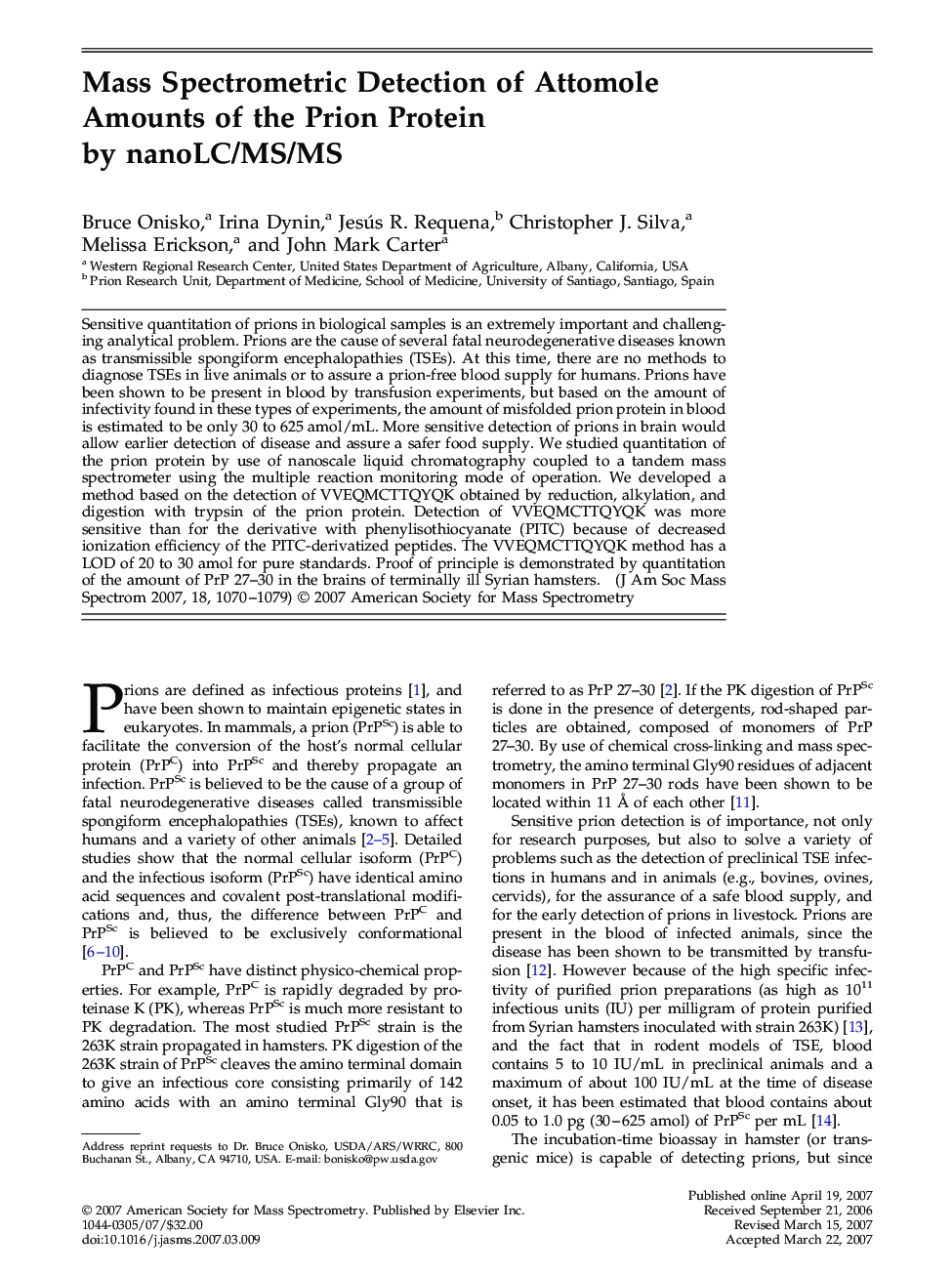| Article ID | Journal | Published Year | Pages | File Type |
|---|---|---|---|---|
| 1195575 | Journal of the American Society for Mass Spectrometry | 2007 | 10 Pages |
Sensitive quantitation of prions in biological samples is an extremely important and challenging analytical problem. Prions are the cause of several fatal neurodegenerative diseases known as transmissible spongiform encephalopathies (TSEs). At this time, there are no methods to diagnose TSEs in live animals or to assure a prion-free blood supply for humans. Prions have been shown to be present in blood by transfusion experiments, but based on the amount of infectivity found in these types of experiments, the amount of misfolded prion protein in blood is estimated to be only 30 to 625 amol/mL. More sensitive detection of prions in brain would allow earlier detection of disease and assure a safer food supply. We studied quantitation of the prion protein by use of nanoscale liquid chromatography coupled to a tandem mass spectrometer using the multiple reaction monitoring mode of operation. We developed a method based on the detection of VVEQMCTTQYQK obtained by reduction, alkylation, and digestion with trypsin of the prion protein. Detection of VVEQMCTTQYQK was more sensitive than for the derivative with phenylisothiocyanate (PITC) because of decreased ionization efficiency of the PITC-derivatized peptides. The VVEQMCTTQYQK method has a LOD of 20 to 30 amol for pure standards. Proof of principle is demonstrated by quantitation of the amount of PrP 27–30 in the brains of terminally ill Syrian hamsters.
